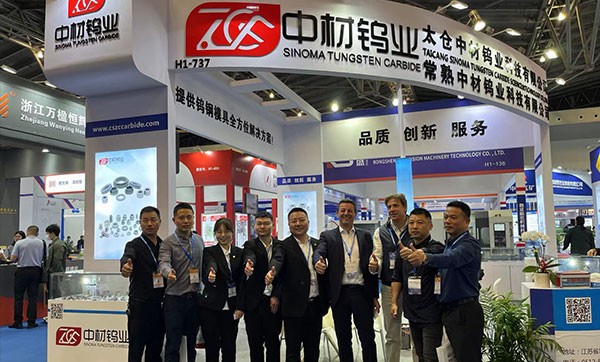Tungsten carbide molds are essential tools in various industrial applications due to their exceptional hardness and durability. These molds are used in manufacturing processes that involve high pressure and wear, such as metal forming, stamping, and injection molding. To ensure optimal performance and longevity, a good tungsten carbide mold should possess several key characteristics. Here, we delve into the essential attributes that define a high-quality tungsten carbide mold.
One of the primary reasons for choosing tungsten carbide as a mold material is its remarkable hardness. Tungsten carbide molds exhibit superior wear resistance, which is crucial for maintaining precision over long production runs. This hardness ensures that the mold can withstand the repeated stresses and abrasive forces encountered during the molding process without significant degradation.
While hardness is critical, a good tungsten carbide mold must also have excellent toughness. This property allows the mold to absorb impact and resist chipping or cracking under high-pressure conditions. Toughness is particularly important in applications where the mold is subjected to sudden, intense forces. Balancing hardness with toughness ensures that the mold remains functional and reliable throughout its lifespan.
Dimensional stability is a key characteristic for any mold, including those made from tungsten carbide. A good mold must maintain its precise dimensions and shape under varying temperatures and pressures. This stability ensures consistent production quality and reduces the need for frequent recalibration or replacement, thereby enhancing overall efficiency.
In many industrial environments, molds are exposed to harsh chemicals, moisture, and high temperatures, which can lead to corrosion and oxidation. Tungsten carbide molds should exhibit excellent resistance to these factors to maintain their integrity and performance over time. This resistance is particularly important in industries such as automotive, aerospace, and electronics, where precision and reliability are paramount.
Effective thermal management is crucial in molding processes to prevent overheating and ensure uniform material flow. Tungsten carbide molds should have good thermal conductivity to dissipate heat quickly and evenly. This characteristic helps in maintaining the structural integrity of the mold and prevents thermal expansion issues that could compromise the quality of the molded products.
A low coefficient of thermal expansion (CTE) is desirable in tungsten carbide molds to minimize dimensional changes with temperature fluctuations. A good mold will have a CTE that closely matches that of the materials being processed to ensure precision and avoid defects such as warping or cracking.
The surface finish of a tungsten carbide mold directly impacts the quality of the molded products. A good mold should have a smooth, polished surface to ensure easy release of the finished parts and to minimize wear during operation. High-quality surface finishes also reduce the need for extensive post-processing, saving time and resources.
The ability to customize and precisely engineer tungsten carbide molds is vital for meeting specific industrial requirements. Good molds are often tailored to the exact specifications needed for the application, including complex geometries and intricate details. Precision engineering ensures that the molds fit seamlessly into the production process and deliver consistent results.
While tungsten carbide molds can be more expensive upfront compared to other materials, their cost-effectiveness over time is a significant advantage. A good mold should provide a long service life with minimal maintenance, thereby reducing the total cost of ownership. The durability and performance of tungsten carbide molds often translate into substantial long-term savings for manufacturers.
In summary, a good tungsten carbide mold should exhibit high hardness and wear resistance, excellent toughness, dimensional stability, corrosion and oxidation resistance, effective thermal conductivity, a low coefficient of thermal expansion, superior surface finish, and the ability to be customized and precisely engineered. These characteristics ensure that the mold performs reliably and efficiently in demanding industrial applications, ultimately contributing to the production of high-quality products and cost savings for manufacturers. By prioritizing these attributes, industries can maximize the benefits of using tungsten carbide molds in their operations.




